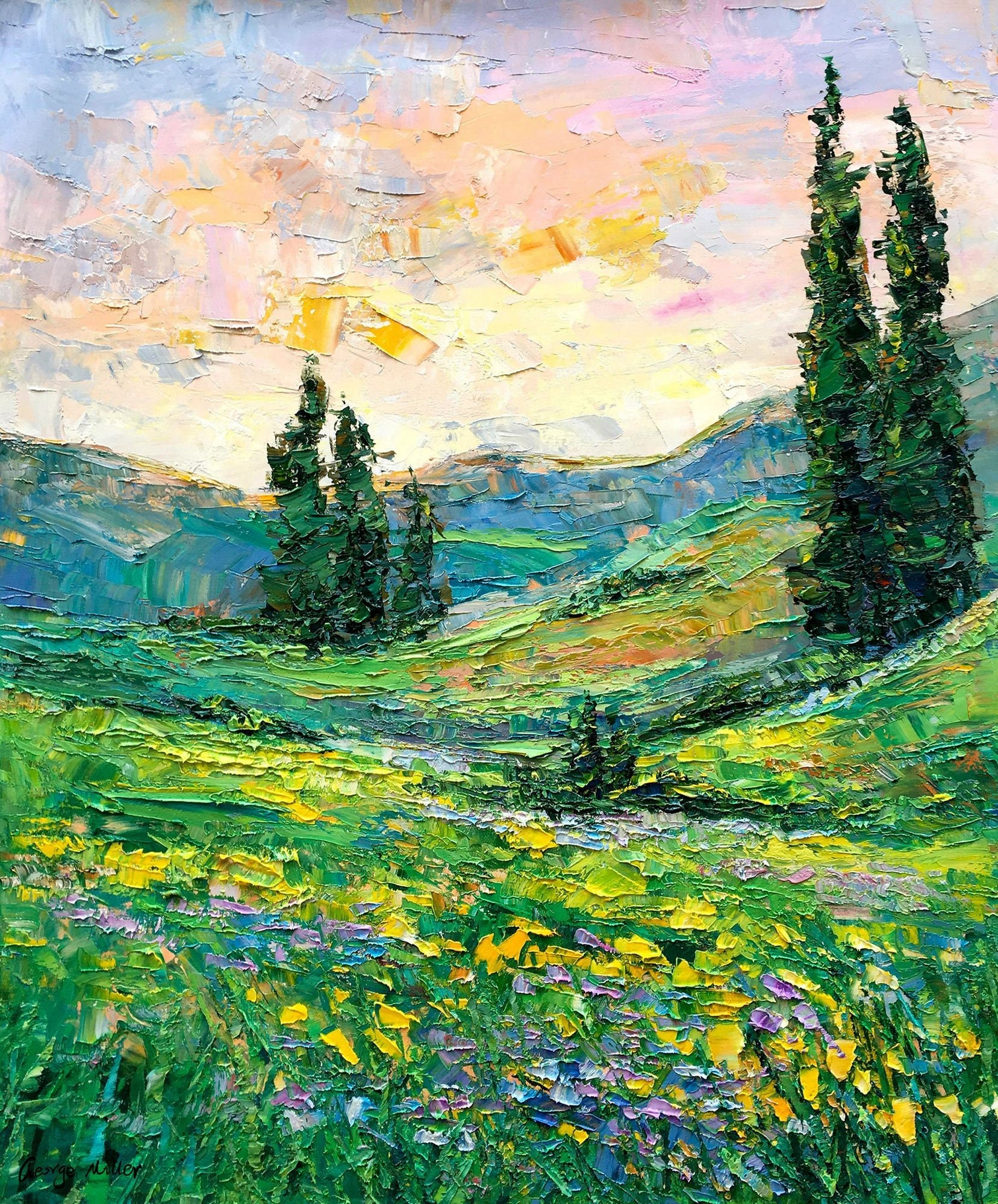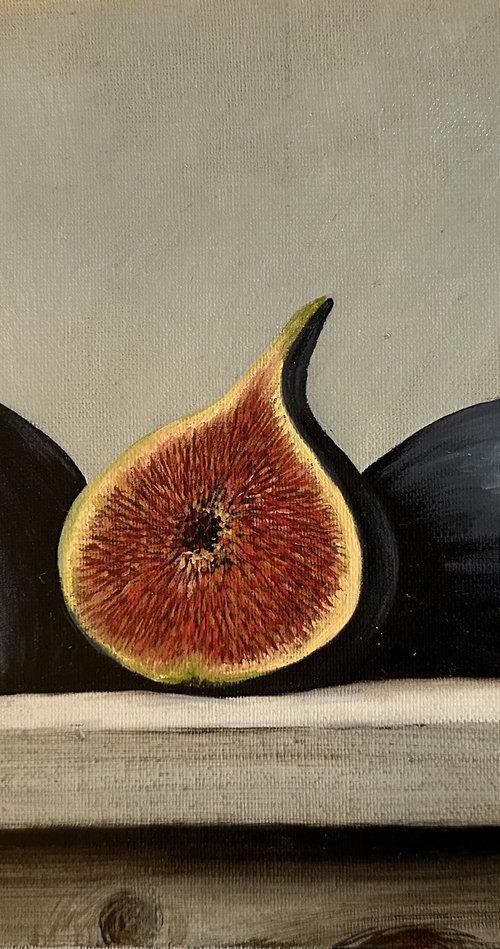Oil Paintings for Sale Featuring Celebrated World-Class Creators
Oil Paintings for Sale Featuring Celebrated World-Class Creators
Blog Article
Discovering Everything About Oil Paints: An Overview to Comprehending Their Beauty and Worth
Oil paints have actually mesmerized audiences for centuries, providing a peek into the artistic proficiency of numerous periods. Their rich background is intertwined with ingenious techniques and extensive emotional expression. Understanding the products and techniques behind these artworks can boost admiration. Additionally, the marketplace for oil paintings offers chances for investors and collectors alike. As one discovers this fascinating globe, the concern occurs: what makes an oil paint genuinely valuable?
The Background of Oil Paint: A Journey Via Time
Oil paint has roots that date back to ancient times, it absolutely grew during the Renaissance, when artists discovered its adaptability and abundant color capacity. Early examples can be mapped to the 7th century, with techniques evolving significantly across cultures. The medium ended up being famous in Northern Europe in the 15th century, particularly with the jobs of artists like Jan van Eyck, who spearheaded its use for in-depth realistic look and dynamic tones. This period marked a departure from tempera paints, enabling higher deepness and texture. As oil painting spread, it affected countless artists, bring about work of arts by popular figures such as Leonardo da Vinci and Rembrandt. The medium's tradition proceeds, forming the art globe well into contemporary times.
Recognizing Oil Repaints: Products and Techniques
As musicians explore the globe of oil paints, they run into a varied selection of products and techniques that define this medium. The main components of oil paint include pigments, which offer shade, and drying out oils, such as linseed, that bind the pigments and facilitate application. Various additives can customize the paint's appearance and drying time, improving adaptability. Strategies like glazing, where clear layers are developed, and impasto, which involves applying thick paint, allow for different visual effects. Additionally, using brushes, palette blades, and also fingers can develop unique textures and finishes. Understanding these methods and products allows artists to fully express their imagination and accomplish the preferred impact in their artwork.
The Role of Shade in Oil Paintings
Shade plays a pivotal duty in oil paintings, affecting both aesthetic appeal and psychological resonance. Recognizing shade theory basics, consisting of the relationships in between hues, can boost a musician's capability to convey state of mind and ambience. Additionally, understanding color blending methods enables better deepness and splendor in a paint's combination.

Shade Concept Basics
Comprehending color concept is crucial for musicians working with oil paints, as it creates the foundation for creating aesthetically engaging and harmonious compositions. Color concept encompasses the study of exactly how shades engage, the shade wheel, and the connections between primary, secondary, and tertiary shades. Musicians use complementary shades to improve contrasts and create prime focus, while comparable shades promote unity and cohesiveness within an item. Furthermore, the principles of great and warm shades influence the assumption of depth and space in a paint. Understanding these principles enables artists to adjust color effectively, leading the customer's eye and connecting their designated message. Mastery of shade theory eventually improves an artist's capability to share emotions and ideas with their work.
Emotional Influence of Color
The psychological impact of shade in oil paintings plays a crucial function in just how audiences attach and perceive with artwork. Shades evoke certain feelings and moods, affecting the viewer's emotional state. For example, warm shades like oranges and reds can produce a feeling of heat and energy, while amazing tones such as blues and environment-friendlies frequently stimulate calmness or introspection. Artists purposefully pick color schemes to boost narrative components, leading the target market's psychological trip. The saturation and comparison of shades additionally magnify these results, attracting focus and producing emphasis. Eventually, the interplay of colors in oil paints not just boosts their visual charm but also works as a powerful medium for emotional expression, enriching the viewer's experience and analysis.
Shade Mixing Techniques
While numerous facets of oil paint add to the general composition, mastering shade mixing techniques is vital for accomplishing preferred effects and deepness. Shade mixing can be come close to with various approaches, consisting of the additive and subtractive processes. Additive blending includes incorporating colors of light, while subtractive mixing counts on pigments, where colors mix to create brand-new shades. Artists usually use a limited palette to develop harmonious jobs, recognizing the connections in between primary, second, and tertiary colors. Strategies such as glazing and scumbling additionally enhance depth and luminosity. By masterfully blending colors, a musician can evoke feelings, create focal factors, and achieve a sense of realistic look, ultimately boosting the painting's aesthetic and psychological effect.
Famous Oil Painters and Their Iconic Works

Famed for their mastery of color and technique, oil painters have produced several of the most celebrated artworks in history. Popular artists like Vincent van Gogh captivated audiences with his emotive brushwork in "Starry Night," while Claude Monet's "Perception, Dawn" prepared for Impressionism. Leonardo da Vinci's "Mona Lisa" continues to be a long-lasting icon of artistic brilliant, showcasing his ability in recording human expression. Meanwhile, Rembrandt's "The Night Watch" shows his ingenious use light and shadow. Various other remarkable figures consist of Pablo Picasso, that changed modern art with his bold experimentation in works like "Les Demoiselles d'Avignon," and Georgia O'Keeffe, whose lively representations of landscapes and blossoms helped specify American modernism. Each artist's one-of-a-kind design contributed greatly to the oil painting landscape.
Just how to Review the Quality of an Oil Painting
Examining the high quality of an oil painting involves a mindful evaluation of craftsmanship strategies, in addition to an evaluation of shade and structure. Observing brushwork, layering, and the application of paint can reveal the musician's skill degree. Furthermore, the interplay of shades and the general arrangement of components contribute significantly to the painting's visual value.
Assessing Workmanship Methods
A meticulous analysis of craftsmanship strategies is necessary for establishing the high quality of an oil paint. Evaluators need to first examine the application of paint; thick, textured brushstrokes might suggest a competent hand, while overly uniform applications can suggest a lack of deepness. oil paintings for sale. The layering method is also essential; the existence of glazes and differed click here thickness can improve luminance and complexity. Additionally, the quality of the products made use of, such as the canvas and pigments, plays a considerable function in resilience and total visual. Attention to detail in components like sides and shifts between colors shows the musician's commitment to their craft. Ultimately, these methods add to the paint's emotional influence and market value, working as indicators of the musician's skill and intent
Evaluating Shade and Make-up
While evaluating the quality of an oil painting, one need to concentrate on the interaction of shade and composition, as these components are fundamental to the artwork's general effect. Shade choices can establish and stimulate emotions mood; consequently, the artist's combination need to be taken a look at for consistency and contrast. A well-balanced make-up directs the audience's eye and develops a feeling of unity. Artists typically use techniques like the guideline of thirds or leading lines to boost aesthetic interest. Furthermore, making use of light and darkness can include deepness, enhancing the three-dimensionality of the painting. Eventually, an effective oil paint weds color and composition, involving the audience and welcoming a much deeper recognition of the artist's vision and technique.
Caring for and Preserving Oil Paintings
Correct treatment and conservation of oil paintings is important for maintaining their honesty and long life. To secure these artworks, it is important to display them far from straight sunshine, which can create fading and staining. Keeping a steady environment with controlled temperature and moisture more aids in avoiding damage. Cleansing must be done gently making use of a soft, completely dry cloth, avoiding any kind of rough chemicals that might damage the paint or varnish. Routine evaluations for indicators of degeneration, such as splitting or flaking, are advisable. When storing or moving oil paints, correct cushioning and framework are required to avoid physical damage. Ultimately, thorough treatment adds to the aesthetic appeal and worth of oil paints in time.
The Marketplace for Oil Paintings: Gathering and Spending
Recognizing the market dynamics for oil paints is important for financiers and collectors alike. The worth of these art work is affected by various elements, consisting of the artist's track record, historic relevance, and current patterns. Collection agencies often seek pieces that reverberate directly while considering possible recognition in worth. Auctions and galleries function as key locations for acquiring and selling, with rates varying based upon demand and rarity. Purchasing oil paints requires research study right into the market, in addition to an understanding of authenticity and provenance. Furthermore, arising artists may supply chances for considerable returns, while established names can command high rates. In general, a critical approach to accumulating can yield both visual pleasure and financial rewards.

Often Asked Inquiries
What Are the Environmental Impacts of Oil Painting Materials?
The environmental influences of oil painting products include the launch of volatile natural compounds (VOCs), unsafe waste generation, and resource removal for pigments. These elements add to contamination and ecological destruction, raising worries among ecologically conscious artists and customers.
How Do Various Canvases Affect Oil Painting Outcomes?
Different canvases influence oil paint results significantly. Absorbency, appearance, and surface area high quality can modify paint application, drying times, and color vibrancy. Musicians frequently select specific canvases to achieve wanted effects and enhance their artistic expression.
Can Oil Paintings Be Recovered if Harmed?
If harmed, Oil paintings can certainly be restored. Specialist conservators make use of different techniques to fix splits, clean surfaces, and address staining, making certain that the art work keeps its original appeal and worth for future generations.
What Are the Signs of an Initial Oil Painting?
The signs of an original oil painting consist of noticeable brush strokes, structure variations, and an uneven canvas weave (oil paintings for sale). In addition, credibility may be validated with provenance, signatures, and the visibility of a varnish layer distinct to oil tools
Exactly How Has Technology Influenced Modern Oil Paint Techniques?
Innovation has actually substantially influenced modern-day oil painting methods by introducing digital tools for preparation, enhanced products for texture and durability, and online systems for selling and sharing art, therefore expanding musicians' creative opportunities and target market reach. Oil paint has origins that date back to ancient times, it genuinely flourished during the Renaissance, when musicians discovered its convenience and rich color possibility. The psychological effect of shade in oil paints plays a critical role in exactly how viewers connect and perceive with artwork. While several aspects of oil painting contribute to the overall structure, understanding color mixing methods is vital for achieving wanted impacts and depth. Reviewing the high quality of an oil painting includes a careful analysis of craftsmanship strategies, as well as an analysis of shade and composition. While reviewing the high quality of an oil paint, one need to focus on the interaction of color and make-up, as these elements are basic to the artwork's total effect.
Report this page